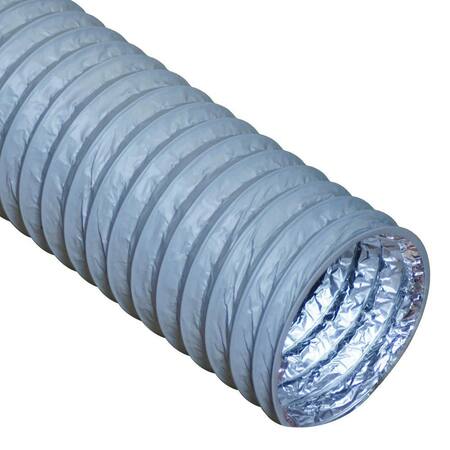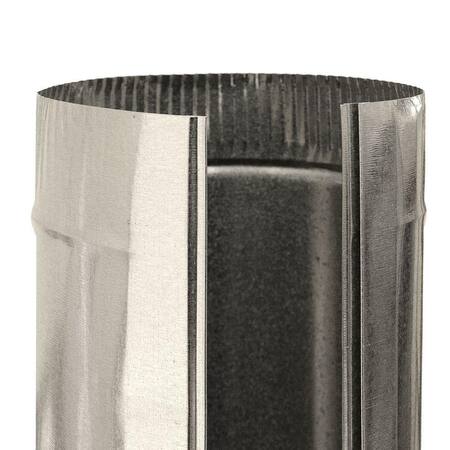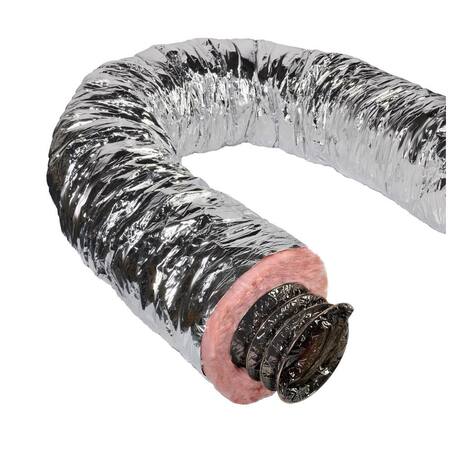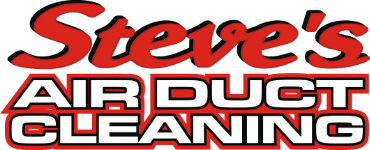Dirty Air Ducts and Respiratory Issues: Exploring Their Link
100 years ago, people slept under piles of homemade quilts in heavy pajamas during the winter months and sweltered during the summer months. Homes these days maintain a more or less stable environment year-round thanks to the HVAC system. But everything, even modern environmental control systems, have their downside. And with the contemporary HVAC system, the weak link is the ductwork. Without regular air duct cleaning dirt, dust and other pollutants that accumulate in the ductwork are circulated endlessly throughout the home causing everything from minor irritation to serious respiratory infections.
In this post, we're going to take a close look at the link between dirty air ducts and respiratory conditions in the typical Arvada home.
Common Air Duct Contaminants
At this point, you might be wondering "what's in my air ducts that could possibly present a health threat?" It's a good question.
Here is a partial list of some of the nasty things that can collect in air ducts over time:
- Dust and dirt — In the part of Colorado we get pummeled by wind-blown dust from the plains to the east and all kinds of detritus blowing down off the mountains to the west.
- Pollen — During the spring in particular pollen levels in this part of the country go through the roof. A lot of it will find its way into your air ducts.
- Mold spores — Mold spores are unpleasant little things that are carried on the wind and can aggravate a person’s allergies and trigger severe asthma attacks.
- Hair and dander from unwanted guests — Like people mice, raccoons, birds and other animals are always looking for a safe warm home. Sometimes that means your air vents.
- Industrial pollutants — All kinds of contaminants are expelled from factories and come to rest in air ducts. While most are not toxic they can irritate the lungs and eyes.
- Pet dander — No matter how much you love your pets you have to be aware that they are constantly shedding hair and dander. A lot of it winds up in the air ducts.
Dirty Air Ducts: Potential Health Risks
As we will see, dirty air ducts have the potential to cause a myriad of respiratory issues and other health problems. But it doesn’t have to be that way. Homeowners who engage in regular HVAC cleaning breathe clean and pristine year-round and don't have to worry about respiratory issues caused by dirty ducts. However, that is just a partial list of the things that can wind up in the air ducts of the typical home. Without regular air vent cleaning much of it will be recirculated throughout the house where it can cause all manner of health issues, including the following:
- Allergies — Did you know that millions of Americans suffer from allergy symptoms caused by indoor allergens? It’s true. And if you have dirty air ducts you, and anyone else in the home, is a prime candidate to develop allergic symptoms. Take another look at that list of pollutants potentially lurking in your air ducts then ask yourself if you want to be breathing in that contaminant stew while you sleep. If that prospect doesn’t appeal to you, call Steve’s and arrange to have your air ducts cleaned.
- Asthma — If you’ve ever seen anyone have an asthma attack you know how serious it can be. The last thing anyone wants is for dirty ductwork to either cause or aggravate someone’s asthma. Pollen, pet dander, mold spores and more can all trigger asthma attacks. But if you keep the air ducts in your home clean and hygienic you greatly reduce the odds of that happening.
- Respiratory Infections — If you or someone in your family is experiencing a persistent cough or congestion, shortness of breath or an inexplicable sore throat it may be the warning signs of a developing respiratory infection. If your air ducts have not been cleaned, perhaps ever, they may well be the cause of all this respiratory distress. Some people are naturally more sensitive to airborne contaminants so while you may be fine, a loved one may develop a respiratory infection from breathing contaminated air. Don’t let that happen. Call a professional vent cleaner.
- Brain Fog — It’s been known for some time that airborne contaminants including dirt and dust can contribute to the onset of Alzheimer’s disease and other sorts of cognitive impairment. The exact mechanism by which this occurs is not yet fully understood but there is a mountain of evidence that strongly suggests an air pollution/cognitive impairment link. You can’t do much about that when you go outside, except perhaps to wear a dust mask. But if you keep the air ducts in your home clean you’ll be doing yourself and your loved ones a potentially big long-term favor.
- Skin Irritation — Mold spores, industrial contaminants and other pollutants are known to aggravate skin conditions such as eczema, psoriasis and atopic dermatitis. Airborne pollutants can also dry out the skin and cause rashes, outbreaks of hives, itching and other problems. If someone in your house is complaining about rashes or that their skin seems extra dry and itchy, the problem may not be the current weather. It may be dirty air ducts.
- Stress — When people experience unexplained wheezing, sneezing, respiratory distress and itchy skin or they are confused and not as mentally sharp as they normally are, this can create enormous stress. Stress is known to both cause and aggravate a multitude of health problems. The good news is that you may be able to alleviate stress that’s a byproduct of dirty ducts by contacting Steve’s and arranging for air duct cleaning services.
How Often Should Air Ducts Be Cleaned?
It is recommended to have your ducts cleaned every 1-3 years. If there is someone in the house with asthma or allergies, this is especially important. If you have recently engaged in remodeling or renovation work you should have the ducts cleaned as soon as the contractors clean up and leave at the end of the job.
Types of Air Ducts
The choice of air duct type can significantly affect the efficiency, cost, and maintenance of an HVAC system. This outline discusses five common types of air ducts: flexible ducts, rigid sheet metal ducts, fiberglass-lined ducts, fiberboard ducts, and flexible fabric ducts, highlighting their characteristics and uses.
Flexible Ducts

Flexible ducts, commonly made from plastic or metal wire coils covered with a flexible plastic material and surrounded by insulation, are one of the most versatile types of air ducts. They are highly adaptable and easy to install in tight or constrained spaces, making them ideal for complex or smaller ductwork systems where rigid ducts might not fit. Flexible ductwork has been around since the 1970s, but right out of the gate it raised an important question: can such a thing be effectively cleaned? Given that a typical flexible duct has hundreds of accordion-style ribs that provide it flexibility, but also provide countless places for airborne dirt and debris to accumulate, it's a fair question. In the past, the answer was "No". Fortunately, times and technology have changed and the answer now is "Yes, but you'll need to use an air duct cleaning company that knows what it’s doing.”
Flexible Fabric Ducts (Textile Ducts)
Flexible fabric ducts, also known as textile ducts or air socks, are made from special fabrics designed to distribute air evenly. They are often used in commercial or industrial applications where a uniform air distribution is required, such as in food processing plants or large retail spaces.

Rigid Sheet Metal Ducts
Rigid sheet metal ducts are constructed from galvanized steel or aluminum and are known for their durability and long lifespan. These ducts are non-porous, which helps to prevent mold growth and reduces the risk of air contamination. They are suitable for use in both residential and commercial HVAC systems.
Fiberboard Ducts
Fiberboard ducts are constructed from compressed resin-bound fiberglass fibers. These ducts are typically covered with a foil exterior that acts as a vapor barrier. Fiberboard ducts are commonly used in residential applications due to their low cost and built-in insulation properties.
Fiberglass-Lined Ducts
Fiberglass-lined ducts are made of sheet metal with an inner lining of fiberglass insulation. These ducts are often used in commercial buildings to dampen the noise produced by the HVAC system. The fiberglass lining provides thermal insulation and helps with noise reduction, making these ducts a popular choice in environments where noise control is important.

Air Duct Types Compared
This table provides a concise comparison of the different types of air ducts based on key attributes, helping in making informed decisions for HVAC installations. Each type has its advantages and limitations, and the best choice will depend on specific needs such as budget, installation environment, and maintenance capabilities.
| Attribute | Flexible Ducts | Rigid Sheet Metal Ducts | Fiberglass-Lined Ducts | Fiberboard Ducts | Flexible Fabric Ducts |
|---|---|---|---|---|---|
| Cost | Low | High | Moderate | Low | Moderate to High |
| Airflow Efficiency | Potentially less efficient due to kinks or bends | Excellent airflow efficiency due to smooth surfaces | Moderate, efficiency can degrade if fiberglass deteriorates | Lower efficiency due to rough interior surface | High efficiency with uniform air distribution |
| Need for Cleaning | Higher need for cleaning due to dust accumulation in bends | Low, smooth surface reduces dust accumulation | Higher need for professional cleaning; fiberglass traps dust | High, rough surface traps dust and debris | Moderate; fabric can be removed and washed |
| Durability | Less durable, susceptible to damage | Highly durable, resistant to damage, long lifespan | Moderately durable, but fiberglass lining can degrade over time | Less durable, prone to mold growth if moisture accumulates | Durable indoors, less suitable for harsh conditions |
| Additional Features | Lightweight and flexible | Non-porous, prevents mold growth, minimal air contamination | Thermal insulation and noise reduction | Built-in insulation, acts as a vapor barrier | Provides draft-free, uniform air distribution |
Five Signs Air Ducts Need Cleaning
Ductwork has not yet been made that can clean itself or alert you that it needs to be cleaned. You need to stay alert for the signs that a cleaning is required. Some of those signs include:
- Unpleasant odors — If foul smells are emanating from the ductwork it's time to call Steve's.
- Dust and dirt on the vents — If you see dirt and dust on the vent covers it's time to call Steve's
- Frequent changing of the air filter — If you need to change the air filter in your HVAC system all the time it means there is dirt in the ductwork.
- Weak or uneven airflow — If air doesn't seem to be kicking out of the vents the way it used to it's time to schedule a thorough duct cleaning
- You have just renovated — Remodeling and renovation projects throw huge amounts of dust and debris into the air. If you have just remodeled the kitchen, bathroom or any other part of the home you need to have the ducts cleaned. All of them.
Our years of experience and proven dedication to the wellbeing of our customers is your assurance that when you enlist Steve’s to clean the flexible ductwork in your Arvada home, you will get your money's worth.
If the flexible ductwork in your home has never been cleaned, or if it is sending one of the above-listed signals that something is wrong, get in touch with Steve’s Air Duct Cleaning and rest easy.
Air Duct Cleaning FAQs
The frequency of air duct cleaning depends on various factors, including the age of your home, the presence of pets, allergies or respiratory issues, and local environmental conditions. Generally, it is recommended to have your air ducts cleaned every 3 to 5 years. However, if you notice significant dust buildup, mold, or unusual odors, more frequent cleaning may be necessary.
The duration of professional air duct cleaning depends on the size of the home, the complexity of the ductwork, and the level of contamination. On average, a thorough cleaning for a typical single-family home can take between 2 to 4 hours. Larger homes or those with heavily contaminated ducts may require more time.
Even in a new home or with a new HVAC system, air duct cleaning can be beneficial. Construction debris, dust, and drywall particles can enter the ductwork during construction. If you have recently renovated or installed a new HVAC system, professional cleaning can help remove any contaminants and ensure optimal system performance.
Yes, air duct cleaning can help reduce energy costs by improving the efficiency of your HVAC system. Clean ducts allow for better airflow, reducing the workload on your HVAC system and allowing it to operate more efficiently. This can lead to lower energy consumption and reduced utility bills.
While professional air duct cleaning significantly reduces dust, allergens, and contaminants circulating through your HVAC system, it will not eliminate all dust in your home. Regular cleaning, dusting, and vacuuming are still necessary to maintain a dust-free environment. Air duct cleaning, however, can reduce the overall amount of dust that settles in your home.
Dirty air ducts can harbor allergens, mold, bacteria, and other pollutants that may pose health risks, especially to individuals with allergies, asthma, or other respiratory conditions. Poor indoor air quality can lead to symptoms such as coughing, sneezing, eye irritation, and respiratory infections. Regular air duct cleaning can help mitigate these risks by removing harmful contaminants from the HVAC system.
Professional Air Vent Cleaning in Arvada by Steve’s
Steve’s has been providing Colorado homeowners with high-quality home maintenance services for nearly 45 years. If we had a dollar for every time someone asked us if we can clean flexible air ducts we’d have quite a nice roll of bills by now. Cleaning flexible air ducts is in fact one of our specialties. Our field technicians have been rigorously trained in the proper way to handle this type of job and have been provided the tools necessary to ensure it’s done right. The first time. But before we go on, let’s back up for a minute.
Start Breathing Easier.
Your air ducts are the lungs of your home and keeping them clean keeps you and your family healthier and your HVAC equipment working optimally.

